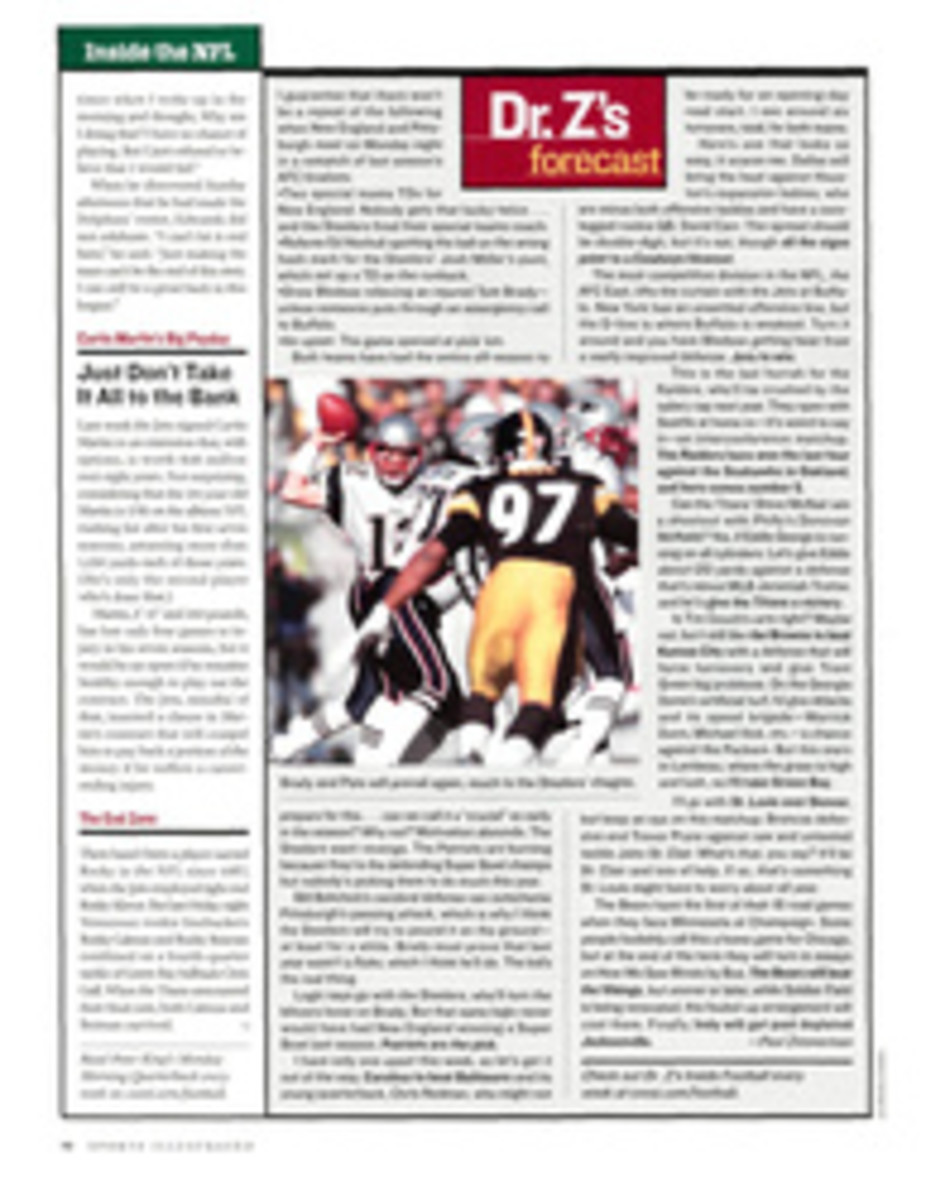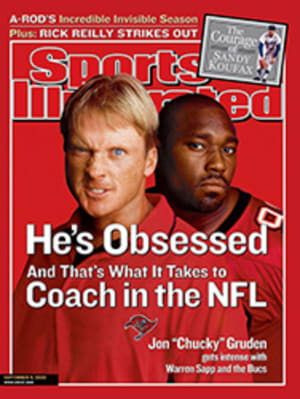
Going, Going... The U.S. Open may soon say farewell to two great champions, Monica Seles and Pete Sampras
Ten years ago, the last time she played a singles match on this
court, none of it had happened: the stabbing, her father's death,
her greatness slipping away. Monica Seles was in the middle of
her world conquest then, about to win her second U.S. Open title,
and the grandstand court at Flushing Meadow had a different feel.
Champions played here all the time. But now the Open has the
oversized Arthur Ashe Stadium, and the grandstand has declined
into a dingy venue for third-tier showdowns. The hot celebs go
someplace else to watch.
Seles doesn't belong here, but then again maybe she does. It's
Thursday night in the first week of the 2002 Open, and her
second-round match, against 83rd-ranked Barbara Schwartz, is a
disaster. Seles lost the first set 6-1 and has just been broken
to go down 4-3. The stands are half empty. Seles is teetering on
the edge, and not only in this match. She will turn 29 soon, and
she has been thinking retirement. She says she's taking her
career "one day at a time."
This summer Seles's body broke down again. In the latest in a
string of injuries she has endured since returning from a
two-year layoff in 1995, she aggravated a stress fracture in her
right foot. She hopes to play the WTA Championships in November,
but after that, who knows? In 2003 she plans to slash her
tournaments from the 17 required by the WTA tour for a computer
ranking to 10 or fewer. "I don't want to play a full schedule,
but it's not just want," Seles says softly. "I don't think my
body can."
This is how the end begins, then: not with a loss but with a
whisper. Seles's shots are still among the cleanest in the game,
and her will is still formidable. She crouches, smacks her
racket on the ground, cranks up her grunt and breaks Schwartz's
serve. Then she beats down her opponent with a flurry of
punishing ground strokes and evens the match at one set apiece.
In the third set she begins to handle Schwartz, but it's nothing
close to a vintage Seles performance. Her game lacks conviction,
and in tennis conviction is everything. For months people have
been asking her about retirement. A couple of years ago such
questions made her cry. Now they just sink in.
"Once you hit 25, they ask you all the time, 'How much longer are
you going to play?'" says Martina Navratilova. "Then you start
wondering. It starts eating at you. You start playing a different
game."
Seles isn't the only one. Pete Sampras hasn't won a tournament
since Wimbledon in 2000, but after two years of changing coaches
and denying the obvious, he came into this U.S. Open at peace
with the fact that he doesn't have the will to dominate anymore.
Because Sampras rarely showed emotion, few fans understood how
big a part it played in his game. He personalized matches to the
point of illness, won a match in New York in '96 despite
exhaustion and vomiting, dedicated his '95 U.S. Open title to
his dying coach. Now Sampras, who says he'll make no decision on
retiring until the end of 2003, is gambling that he can win one
last Grand Slam event without the commitment on which his career
was built. "I don't have that in me anymore," he says. "That's
fine. I'm much happier now than I was when I was dominating,
looking over my shoulder to see who the next guy was. It's
tougher to keep it going. But for a major? I've still got it."
Maybe. The 31-year-old Sampras made a scintillating run last year
before losing the Open final to Lleyton Hewitt, and last week he
rolled over his first two opponents before beating Greg Rusedski
in five sets on Monday. But his wife, Bridgette, is expecting
their first child in December, and it's an article of faith in
tennis that family life will end a champion's run faster than any
opponent. Even basic consideration for other people is considered
a handicap in this sport. "Professional sports are like that in
general," says Lindsay Davenport. "Most of the great players are
a------s or bitches."
Not Sampras and Seles, who have elevated tennis with what Jim
Courier calls "their pure and simple class." At the Open,
however, they're constantly asked when they plan to stop. "We're
the problem," says Courier, a former No. 1 player who is now a
tennis TV commentator. "We, the public, are uncomfortable
watching people we've seen dominate for so long suffer."
But suffering, of course, has been at the core of Seles's career.
Her big-bang showdown with Jennifer Capriati at the '91 U.S. Open
heralded the power era in women's tennis, but it was her run to
the 1995 final--after the layoff that followed her courtside
stabbing by a deranged fan of Steffi Graf in 1993--that forever
won the hearts of the public. Since then fans have cheered her
through the death of her father and coach, Karolj, in 1998, and
through all the injuries.
Now, despite the bone-chilling mist hovering over the grandstand
court, fans flood in to cheer Seles again. She has taken a 4-2
lead in the third set. Time is running out.
Most of Seles's contemporaries are gone. Over in the big stadium
Courier has finished his night's work for USA Network. Graf,
Seles's old rival, gets into a car with her husband and their
infant son, Jaden Agassi. No fan envisions Seles in a TV booth.
No fan knows if she's ever been in love.
She's up 5-2 but down a break point at 30-40 when it comes: a
classic Seles rally, 21 strokes long and full of grunts and
line-kissing backhands. Finally Schwartz sends a forehand wide.
Now Seles forces her to hit a backhand into the net, and it's
match point. Seles pops an ace down the T. The grandstand
erupts. People stand, clap and yell as she signs autographs.
Then she rushes off through the halls under the old stadium,
surrounded by security.
But it's cold down there. In two days Seles will face another
player, ranked No. 106, and she'll struggle before winning, and
after that she'll have to face Martina Hingis. She walks down
the halls faster to generate heat, then even faster, but finally
it comes down to a choice that isn't a choice: suffer or run. So
Seles runs.
COLOR PHOTO: PHOTOGRAPH BY MANNY MILLAN THE LAST BATTLE? Seles and Sampras fought hard in the first week of the Open, but both admitted that their days on tennis's biggest stage were numbered.
COLOR PHOTO: BOB MARTIN [See caption above]

